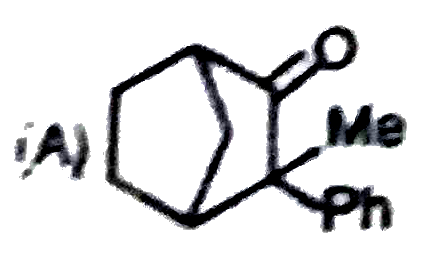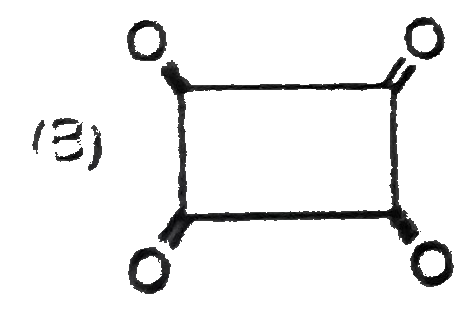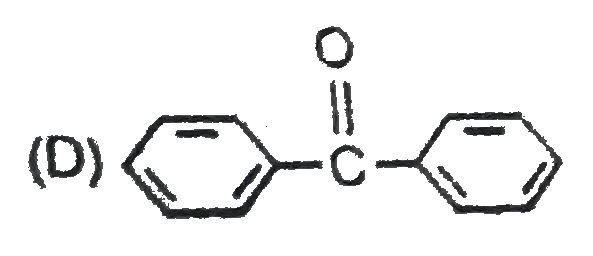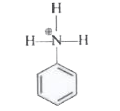Which one of the following compound will not show enolisation ?




The correct Answer is:A,B,C,D
To determine which compound will not show enolization, we need to analyze the presence of alpha hydrogens in each compound. Enolization occurs when there is a hydrogen atom attached to the carbon adjacent to a carbonyl group (the alpha position).
1. Identify the Compounds: We have four compounds to analyze. Let's denote them as Compound A, Compound B, Compound C, and Compound D.
2. Check for Alpha Hydrogens:
- Compound A:
- Structure: A cyclic compound with a carbonyl group and a methyl (Me) group.
- Analysis: The carbonyl carbon has one alpha hydrogen. Therefore, it can undergo enolization.
- Compound B:
- Structure: A compound with a carbonyl group but no alpha hydrogen.
- Analysis: There are no hydrogen atoms on the carbon adjacent to the carbonyl carbon. Thus, it cannot undergo enolization.
- Compound C:
- Structure: Another compound with a carbonyl group.
- Analysis: This compound also lacks alpha hydrogens as all valencies of the adjacent carbon are satisfied. Therefore, it cannot undergo enolization.
- Compound D:
- Structure: Similar to Compound B, it has a carbonyl group.
- Analysis: There are no alpha hydrogens present. Hence, it cannot undergo enolization.
3. Conclusion:
- Based on the analysis, Compounds B, C, and D do not show enolization due to the absence of alpha hydrogens. Compound A can show enolization but is destabilized due to non-planar geometry. However, the question asks for compounds that do not show enolization, which applies to B, C, and D.
Final Answer:
All compounds B, C, and D do not show enolization due to the absence of alpha hydrogens.
---
- Compound A:
- Structure: A cyclic compound with a carbonyl group and a methyl (Me) group.
- Analysis: The carbonyl carbon has one alpha hydrogen. Therefore, it can undergo enolization.
- Compound B:
- Structure: A compound with a carbonyl group but no alpha hydrogen.
- Analysis: There are no hydrogen atoms on the carbon adjacent to the carbonyl carbon. Thus, it cannot undergo enolization.
- Compound C:
- Structure: Another compound with a carbonyl group.
- Analysis: This compound also lacks alpha hydrogens as all valencies of the adjacent carbon are satisfied. Therefore, it cannot undergo enolization.
- Compound D:
- Structure: Similar to Compound B, it has a carbonyl group.
- Analysis: There are no alpha hydrogens present. Hence, it cannot undergo enolization.
- Based on the analysis, Compounds B, C, and D do not show enolization due to the absence of alpha hydrogens. Compound A can show enolization but is destabilized due to non-planar geometry. However, the question asks for compounds that do not show enolization, which applies to B, C, and D.
All compounds B, C, and D do not show enolization due to the absence of alpha hydrogens.
Topper's Solved these Questions
Similar Questions
Knowledge Check
Which of the following compounds will not show enolisation?
A B
B C
C D
D
Which one of the following compounds will show enantiomerism ?
A B
B C
C D
D
Which of the following compounds will not show resonance?
A BCH2=CH−CH=CH−⊕CH2C
BCH2=CH−CH=CH−⊕CH2C D
D
Which one of the following compound is not a planar ?
View SolutionWhich one of the following compounds will show geometrical isomerism ?
View SolutionWhich of the following compound will not show tautomerism ?
View SolutionWhich of the following compounds will not show steric inhibition of resonance?
View SolutionWhich of the following compound will not show geometrical isomerism across the it π-bond ?
View Solution
